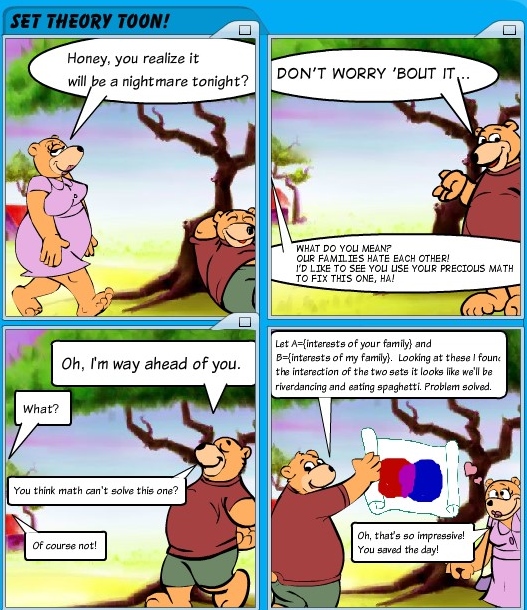

A. Recall our study of the nature of fuzzy sets. Why would the graph of Set A in Fuzzy Theory look like this, compared to the axiomatic set A which an element is either in or out?
B. With a partner, discuss the significance of a binary system in axiomatic set theory, and the significance of a nonbinary system in fuzzy logic.
C. From our discussion, how would you compare and contrast the union of set A and B in Axiomatic Set Theory and Fuzzy Set Theory?
D. Make a conjecture as to why the complement of set A in the world of Fuzzy Set Theory constructed this way.
1. Now that you have explored two types of set theory simultaneously, hypothesize(or give examples) what type of propositions would create sets that are binary(every element is clearly in or out of the set), or sets that fall under the umbrella of axiomatic set theory?
2. What kind of propositions would yield sets that fall into the category of fuzzy set theory?
Part 1:
a. How is seeing a visual representation of the intersection of sets helpful in deepening your understanding of sets?
b. Consider this example: A={1, "j", 35, 7, "a", 3} and B={7, "j", 35, 17, 37, 29, "c"}. Taking into accoung the visual representation above, what is contained in the set "A intersect B"?
c. Now also take into account the set C={29, "c", 33, 4, 2}. What elements are contained in the set "A intersect B intersect C"?
Part 2:
a.First examine the case of a surjection from A to B. From the visual, what would you hypothesize is the defintion of a surjection(onto)?
b. Let's move on to the case of an injection(1:1, not the shot you get at the doctors! :)), what hypothesis can you make from the visual about the definition of an injection?
c. Describe the definition of a bijection.
d. Now, consider your understanding of what a function is. Discuss with your group the relation between a bijection and a function.